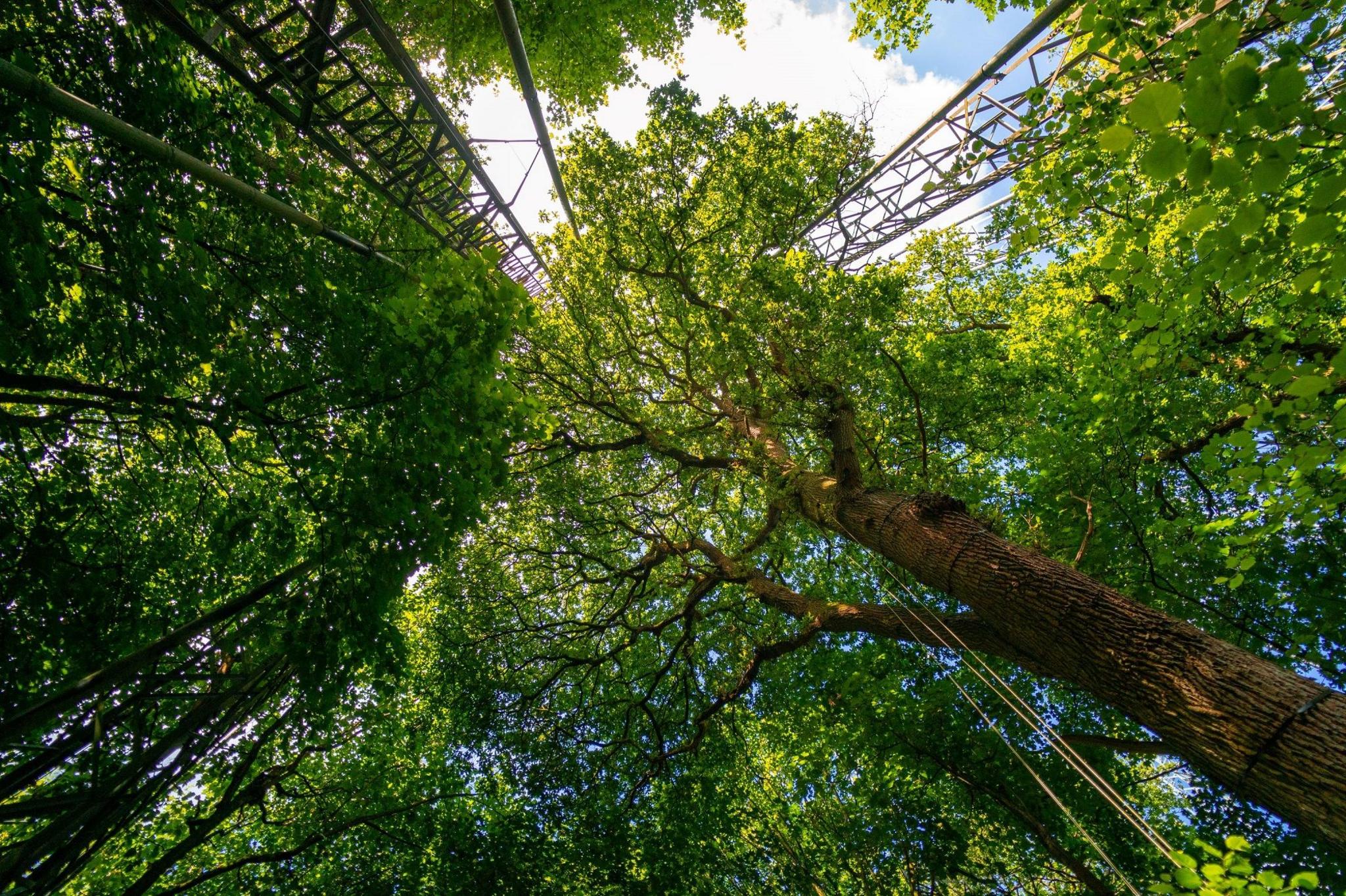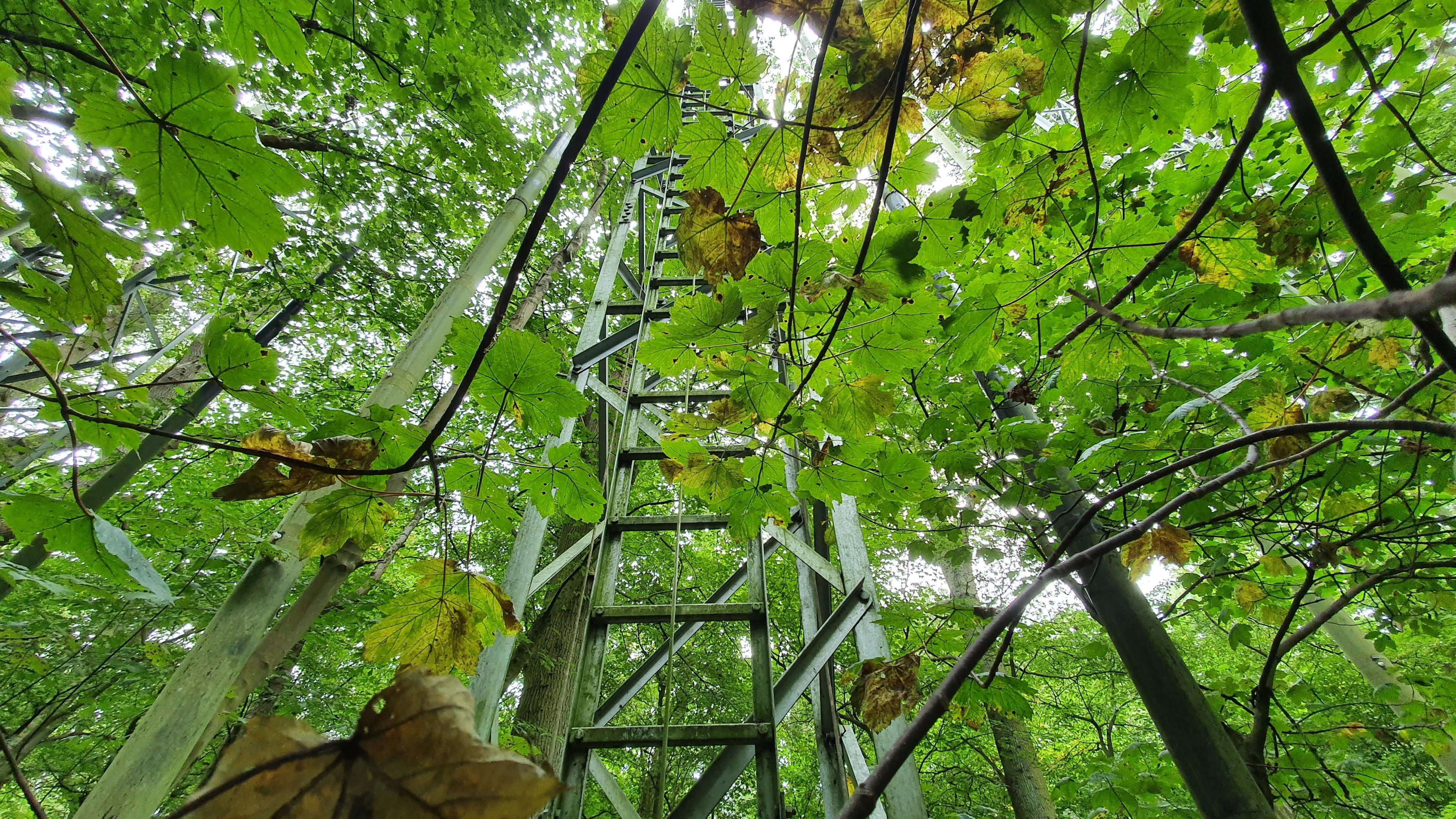Mature trees offer hope in world of rising emissions

The new research centred on 180-year-old English oak trees
- Published
Older trees are able to accelerate their rates of absorbing planet-warming emissions, scientists at the University of Birmingham have found.
A forest of mature oak trees was exposed to elevated levels of carbon dioxide for seven years and in response, the trees increased their production of wood - locking in the greenhouse gas and preventing it from warming the planet.
The researchers hope the study, published in Nature Climate Change, will demonstrate the importance of protecting and maintaining mature forests for tackling climate change.
It is estimated that globally a football field of primary forest is lost every six seconds.
"I think it is a hopeful and positive story," said Professor Rob MacKenzie, director of Birmingham Institute of Forest Research and one of the co-authors of the study.
"This is evidence in favour of careful management of established forests. The old forest is doing a huge amount of work for us. What we definitely should not be doing is cutting it down," he said.
The results of this latest study come from the University of Birmingham's giant Free-Air Carbon Dioxide Enrichment (FACE) experiment, which Prof MacKenzie has headed since its inception in 2016.
FACE is located at a 52-acre forest in Staffordshire and its aim is to understand the impact of our changing climate on woodlands in real-time.
Within the site is a group of 180-year-old English oak trees, and amongst their towering 40m canopies the academics have plumbed in a network of pipes.
Every day these pipes send out a stream of carbon dioxide (CO2) - the greenhouse gas - recreating the conditions the world might see if no action is taken to reduce emissions.
After seven years of monitoring the team of international researchers working at FACE ha, externals revealed, external that the oak trees have increased their productivity under these elevated levels of CO2.
The trees produced nearly 10% more wood, locking in the carbon dioxide for years to come and preventing it from warming the atmosphere.
When trees take in carbon dioxide they can use it in different ways - to produce new leaves, roots or woody biomass.
New leaves and roots are seen as short term stores of carbon dioxide as they can shed or die relatively frequently re-releasing the gas back into the atmosphere. But the researchers found most of the CO2 was converted to forms that enable it to be stored for many decades.
Scientists warn of faster threat to climate limit
- Published30 October 2023
Is carbon capture an efficient way to tackle CO2?
- Published6 August 2024
Previous experiments have shown that younger trees are able to increase their rates of CO2 absorption, but the assumption has been that more mature forests do not have the same adaptability.
Prof MacKenzie told the BBC it was important for the team to understand how older trees behave as that is the majority of the tree cover we have globally.
Although the results are positive he warned: "This absolutely is not a silver bullet and a get out of jail free card our fossil fuel emissions."
"There's absolutely no way we could transform the world into enough forest to continue to let us burn fossil fuels in the way that we are doing now," he said.

Pipes releasing CO2 into the air surrounding the trees were added gradually so as not to disturb the ecosystem
The experiment has been extended until 2031 to that the researchers can continue to monitor the oak trees to see if this behaviour is maintained.
Dr Richard Norby, research professor at the University of Tennessee, who also authored the study said: "It is essential that the FACE experiment continues for more years because we know that responses can change over time. A longer-term record will increase our confidence in the results."
They also hope to look at the impact of elevated CO2 levels on the lifespan of the trees and the knock on impacts on other biodiversity like insects.
Whilst conducting this experiment the scientists observed an uptick in some insect species which could be as a result of the different air conditions.